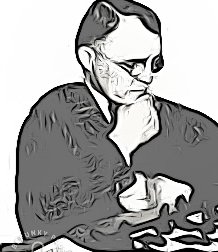The big news in Chicago in 1942 was the first self-sustaining nuclear chain reaction, which ushering in the Atomic Age, took place at the University of Chicago.
Also, that year Salvatore "Sam" Giancana (1908-1975, 67 years old) became a high-ranking member of the Chicago Outfit, an Italian-American Mafia crime family based in Chicago which originated in the city's South Side in 1910.
It’s reputed and was at least partially corroborated by government hearings that during President Kennedy’s administration, the CIA recruited Giancana and other mobsters to assassinate Fidel Castro. Giancana reportedly said that CIA and the Cosa Nostra were "different sides of the same coin"
Even though police were guarding his house in Oak Park, a Chicago suburb, on the night of June 19, 1975, shortly before he was scheduled to appear before the aforementioned government committee (the Church Committee) which was investigating CIA and Cosa Nostra collusion, a gunman entered his home through the basement and shot Giancana in the head and neck seven times with a .22 caliber pistol. Who did it?
In 1942, a less well known event was taking place in Chicago, the city chess championship which started in June and was played over several months. It was won by Herman Hahlbohm (July 10, 1886 – January 13, 1963, 76 years old). He was one of Chicago's most prominent players in the early 1900s.
He secured the title in the following last round game in which he scored a victory over Einar Michelson while defending titleholder Samuel Factor was held to a draw in an 82-move battle with Lewis J. Isaacs in what was the only drawn game of the championship
finals.
Einar Michelsen (1885-1962, 67 years old), was born in Odense, Denmark. In 1903, he helped found the Danish chess magazine Skakbladet. Michelsen emigrated to the United States in 1905, living mainly in Chicago but also in Kansas City and New York.
[Event "Chicago Championship"] [Site "?"] [Date "1942.??.??"] [Round "?"] [White "Einar Michaelson"] [Black "Herman Hahlbohm"] [Result "0-1"] [ECO "B15"] [Annotator "Stockfish 17"] [PlyCount "58"] [EventDate "1943.??.??"] {B15: Caro-Kann} 1. e4 c6 {Black prepares 2...d5 but unlike the French yjr C-K does not hinder the development of the light-squared B.} 2. d4 (2. c4 {is my personal favorite.} d5 3. exd5 cxd5 4. d4 {White usually enfs up with an isolated d-Pawn which is a position I always enjoyed playing.}) 2... d5 3. Nc3 dxe4 4. Bc4 {The Hennig Gambit; it's risky,} Nf6 5. Bg5 (5. f3 {is the usual continuation.} exf3 6. Nxf3 {With the exception of material lovers most players would prefer white because of his lead in development. Enginrd like blavk by something less than a P.}) 5... Bg4 6. f3 exf3 7. Nxf3 Bxf3 8. Qxf3 { Surrendering the d-Pawn, but 8.cxf3 is too ugly to consider.} Qxd4 9. Bb3 { White's opening play has been a bust and there is no reaon why black, short of a huge blunder should not anticipate winning.} Nbd7 10. Rd1 Qe5+ 11. Be3 e6 12. O-O Bc5 13. Rfe1 O-O-O 14. Kh1 {It was probably his intention to plat Nf4} Qh5 {Of course black is more that willing to trade Qs and head foe an ending. but it was a bad decision!} (14... Bxe3 15. Rxe3 Qc7 {Black is two Ps up with an insuperable position.}) 15. Qf4 {[%mdl 8192] Of course white avoids the exchange, but it is also a bad decision.} (15. Qxh5 Nxh5 16. Rxd7 {A little tactical shot that both players missed. White gets the advantage in all variations.} Rxd7 (16... Bxe3 17. Rxd8+ Rxd8 18. Rxe3 {White is better.}) ( 16... Kxd7 17. Bxc5 {White is better.}) 17. Bxc5 {White is better.}) 15... Bxe3 16. Rxe3 Nc5 17. Rf1 {Threatens to win with Re5.} Nxb3 18. cxb3 Rd7 19. Re5 Qg4 20. Qe3 Qd4 {Black has not only a material advantage, but dominates the d-file. White is helpless.} 21. Qxd4 Rxd4 22. Rg5 Nd7 (22... Kd8 {and black stays on top by bringing the K over to defend the f-Pawn} 23. Rxg7 Ke7 24. h3 Rd2 25. Na4 Rhd8 26. Rg3 Rg8) 23. Rxg7 {This attack on the f-Pawn gives white new hope. } f6 24. Ne2 {This move allowing the R to reach the second rabk is wrong. 24... Rd1 was correct.} Rd2 25. Nf4 e5 {Excelletn! This P has a bright furure. 25,,, Rxb2 is not quite as good if for no other reason than it is less active.} 26. Nh5 Re8 {This is too passive because now with 27.Kg1 bringing the K closer to the potentially dangerous e-Pawn, white would have very nearly equalized. 26... e4 or even 26...Rxb2 were much better.} 27. h3 {Pointless.} (27. Kg1 {and it's a new game.} f5 28. Rxh7 (28. Rxf5 e4 29. Rf1 e3 30. Nf4 e2 31. Re1 Nf6 32. Kf2 Ne4+ 33. Kf3 Rd1 34. Rxe2 Rf1+ 35. Kg4 h5+ 36. Nxh5 Nf6+ 37. Nxf6 Rxe2 { Technically black is winning, but by prolonging the game white obtains practical chances.}) 28... Rf8 29. Rf2 {with about equal chances.}) 27... e4 { Black is back on the winning track. Less strong is taking the b-Pawn as there is no good reason to allow himself to be sidetracked by a P or two.} ({Less strong is} 27... Rxb2 28. Nxf6 Rf8 29. Rxd7 $15) 28. Nxf6 Nxf6 29. Rxf6 e3 { White resigned.} 0-1



No comments:
Post a Comment